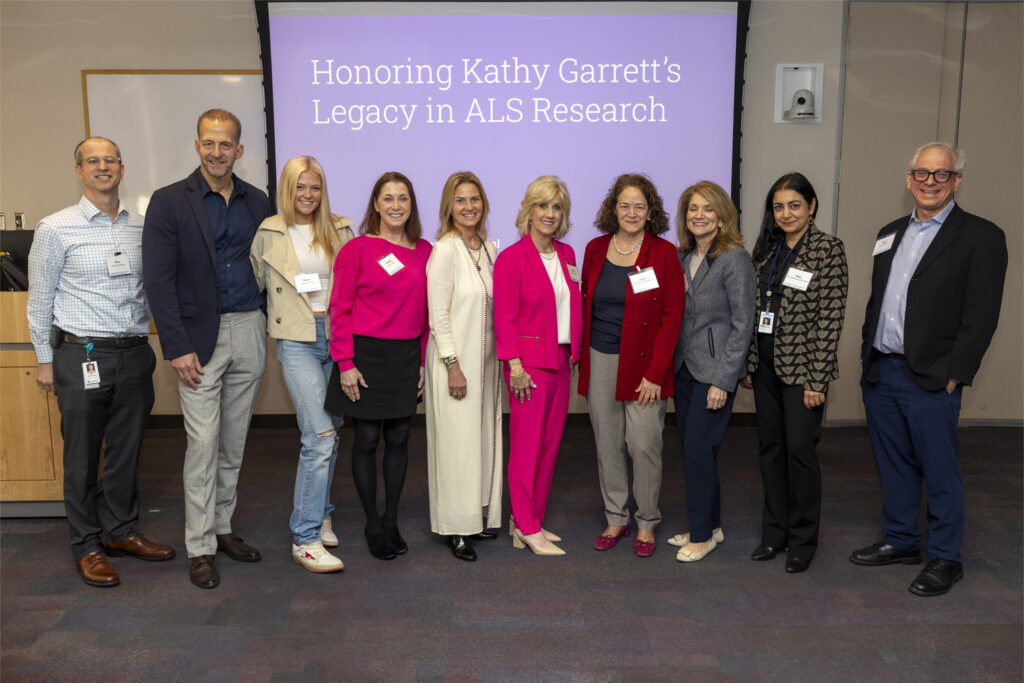There’s an old expression that the shortest distance between two points is a straight line.
However, when it comes to developing new treatments for patients with neurofibromatosis, a condition that causes benign tumors to grow on nerve cells, the quickest path to success may come from two lines converging from opposite directions.
It’s a relationship that has already yielded some promising treatment results, as well as sparked new ideas …
That is the approach that Scott Plotkin, MD, PhD, and Vijaya Ramesh, PhD, have been using for more than a decade at Massachusetts General Hospital as they investigate new treatment strategies for neurofibromatosis and two related disorders.
Sparking New Ideas
Dr. Plotkin is director of the Family Center for Neurofibromatosis at Mass General. His research, which is primarily based in the clinic, seeks to better characterize the distribution and volume of tumors in neurofibromatosis patients, to identify and test new treatments in clinical trials, and to gain a better understanding of the genetics of the disease.
Dr. Ramesh is the principal investigator of a basic science laboratory at the Center for Genomic Medicine at Mass General, where she studies tumor cell cultures in the lab to identify mechanisms of growth and drug treatment targets.
It’s a relationship that has already yielded some promising treatment results, as well as sparked new ideas that are currently being explored in the lab and in clinical trials.
What is Neurofibromatosis?
Neurofibromatosis is a genetic disorder of the nervous system that can manifest in several forms, including NF1, NF2 and Schwannomatosis.

Neurofibromatosis Type 1 (NF1), the most common form of the disorder, causes nerve sheath tumors called neurofibromas. It can also cause dark spots on the skin and freckling in the armpit and groin area, as well as bone abnormalities.
Neurofibromatosis Type 2 (NF2) is a less common form of the disease that is associated with Schwann cell derived tumors called schwannomas, hearing loss, ringing in the ears and impaired balance. Most NF2 patients lose all functional hearing during early adulthood and middle age. In addition, many NF2 patients get meningiomas, which are one of the most common brain tumors in adults.
Building a Feedback Loop
The research efforts of Dr. Ramesh and Dr. Plotkin are built upon a continuous feedback loop between the lab and the clinic. Neurofibromatosis patients who agree to participate in the research process are asked to provide tumor samples that can be studied in the lab.
The tumors are removed during surgery and delivered to Dr. Ramesh’s lab, where she and her team can examine them more closely. “We grow them outside the body and then start asking questions, such as what pathways are involved in their growth and what drugs might be effective in treating them,” Dr. Ramesh explains.
Both investigators draw from their respective areas of expertise to identify and test new treatment strategies.
Both investigators draw from their respective areas of expertise to identify and test new treatment strategies. From her work in the lab, Dr. Ramesh may identify a pathway to target in the tumor cells, and present the idea to Dr. Plotkin to see if there are any therapies on the market that may work.
Conversely, Dr. Plotkin may learn of a therapy that has been effective in treating another type of tumor, and suggest that Ramesh test it on the tumor cells she has in her lab.
“Vijaya sees the value of clinical trials and getting funding for that, and I see the value of preclinical work, the translational work, without which we couldn’t do anything,” Dr. Plotkin explains.
From Concepts to Clinical Trials
One promising treatment strategy for NF2 has come from repurposing drugs that were originally developed to treat malignant tumors.

Dr. Plotkin was the lead author of a 2009 study that tested bevacizumab — an infusion-based therapy that was originally developed to treat colorectal, lung and ovarian cancers — as a treatment strategy for NF2 patients who were not responding to a standard course of treatment. That study showed promising results in terms of shrinking the size of tumors and preventing hearing loss. A follow up study published in 2016 confirmed that bevacizumab improves hearing in NF2 patients.
Drs. Ramesh and Plotkin are currently the lead investigators of a new clinical trial that will test AZD2014, a drug in development at Astro Zeneca, as a treatment for menigiomas (benign tumors that arise from the coverings of the brain and spinal cord). Meningiomas are present in about half of NF2 cases and is a common tumor seen in the general population as well.
Culture of Collaboration
Both investigators also emphasize that their work is a true team effort, with valuable contributions coming from many other specialties as well.
Dr. Plotkin says Mass General is fortunate to have a large community of researchers who have spent years studying neurogenetic syndromes such as NF1 and NF2. This includes James Gusella, PhD, former director of the Center for Genomic Medicine; Mia MacCollin, MD; Xandra Breakfield, PhD; Robert Martuza, MD; and Dr. Ramesh, among others.
Dr. Ramesh credits David Louis, MD, chief of Pathology at Mass General and pathologist Anat Stemmer-Rachamimov, MD, for their help in profiling tumor samples.
“Oncologists, pathologists, surgeons, scientists — they all play a role,” Dr. Plotkin adds. “It’s quite a large and diverse group.”
This article was first posted on the Mass General Research Institute website.
The Research Institute: Saving Lives Through Science
 The Massachusetts General Hospital Research Institute is the largest hospital-based research program in the United States, with a community of more than 8,500 people working across more than 30 institutes, centers and departments.
The Massachusetts General Hospital Research Institute is the largest hospital-based research program in the United States, with a community of more than 8,500 people working across more than 30 institutes, centers and departments.
Our researchers work side-by-side with physicians to pioneer the latest scientific advancements for curing disease and healing patients in Boston, across the United States and around the world.
To learn more about the Research Institute, please visit our website.







